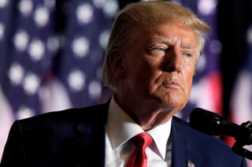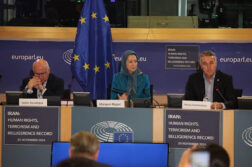Iran’s Influence Operation: Beyond Borders and Digital Frontiers
NEWSLOOKS | Ramesh Sephrrad | Oct. 6, 2023
Iran’s regime seeks to carve out a favorable position on the global stage, its influence operations extend beyond media, academic institutions, and think tanks. These efforts have grown more sophisticated in recent years, even reaching into the US government.
Recently, leaked documents unveiled the Iran Experts Initiative (IEI), a covert project senior Iranian Foreign Ministry officials launched in 2014. This initiative aimed to:
- Foster relationships with international academics and researchers.
- Position critical individuals within the US policy-making spheres, some of whom later became pivotal in the Biden administration’s Iran dealings.
Ariane Tabatabai, currently in the Pentagon, and Dina Esfandiary, a senior advisor at the International Crisis Group, were named in these leaked documents. Both have connections with Robert Malley, the Biden administration’s special envoy on Iran. While the IEI’s impact on US policy is debated, its existence emphasizes Iran’s nuanced approach to narrative-shaping and policy decision-maker influence.
Like many nations, Iran recognizes the power of lobbying within the US. However, direct lobbying for the Iranian regime faces immediate, stringent regulations. Thus, leveraging proxies within the US government allows Tehran to steer policy. One can gauge the regime’s influence on US policy over the past four decades by comparing US-Iran relations to US relations with the enduring opposition coalition, the National Council of Resistance of Iran (NCRI).
In the digital era, Iran’s influence tactics have discovered fresh platforms. Digital campaigns backed by Iran target US political discourse—from fake news websites and narrative-driven social media profiles to cyberattacks on US officials. These digital operations spread preferred narratives, create discord, and influence public sentiment, often with plausible deniability. Iranian officials, both elected and non-elected—including Supreme Leader Ali Khamenei—repeatedly employ these platforms to communicate globally. Concurrently, Iran’s cyber army enjoys unrestricted internet access for their operations.
Over time, the Iranian regime has refined its influence strategies. Persistent state-driven deception, disinformation, and campaigns against the NCRI have established a narrative, both domestically and globally, suggesting that maintaining the status quo is better than regime change. The regime aims to suppress dissent domestically, vilify opponents, and project power internationally.
Drastically, as anti-regime protests in Iran intensify, the regime’s internal narrative wanes. Common slogans in protests across Iran are “down with the dictators, be it the shah or mullahs” and “we will fight, we will win, we will reclaim Iran.” The Iranian people are increasingly demonstrating their preference for an alternative to the current theocracy. Given the regime’s choice of violence over dialogue, western democracies should reevaluate the entrenched belief that the current Iranian regime is irreplaceable. This leads us back to Iran’s influence operations in the West.
The potential sway of Iran within governments in the US, Australia, Canada, and Europe is deeply concerning. It signals the regime’s reluctance and incapacity to foster traditional, constructive diplomatic ties.
The questions for every Western capital are: How resistant have they been to Iranian influence? To what extent does the pro-Tehran narrative mold policies that an alternative to the regime is absent? And what is their course of action? While some pro-Tehran entities might operate autonomously, potential conflicts of interest or biased decision-making threaten all Western democracies. Merely suspecting infiltration can damage the credibility of these governments.
Now is the opportune moment for these governments to introspect their Iran policies, assessing the influence of a prominent state sponsor of terrorism and a nuclear-aspirant regime. With the unveiling of email interactions between groups like the IEI and Iranian policymakers while still serving within the US administration, there’s a need for enhanced scrutiny, surveillance, and counterintelligence to safeguard national security as called by members of the US Congress.
Iran’s US influence campaign underscores today’s dynamic geopolitical tactics. From media outreach to potential government infiltration, the call for vigilance, transparency, and decisive countermeasures is paramount. This challenge transcends partisan politics for the US, demanding a bipartisan commitment to an Iran policy that echoes the Iranian people’s aspirations for a secular, non-nuclear republic.
https://www.newslooks.com/iran-s-influence-operations-beyond-borders-and-digital-frontiers/




